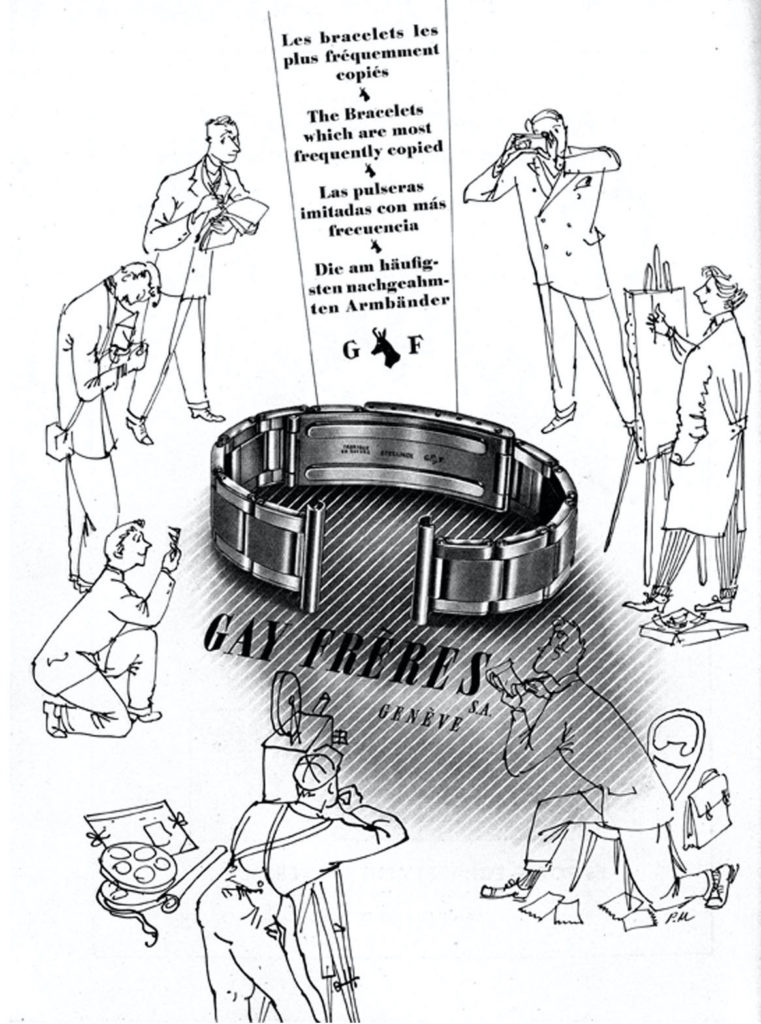Don’t just call them bracelets: they’re Gay Frères
25 February 2021Vintage watches enthusiasts are always on the hunt for rarities, of which they carefully examine the condition of the case, the dial, the good functioning of the mechanics. But how many, in front of a beautiful timepiece from the past, also evaluate the workmanship and state of a bracelet? Probably those who know the value that a coeval bracelet in good condition gives to a watch, especially if it comes from a renowned manufacturer. Does the name Gay Frères sound familiar?
GAY FRÈRES IS ALWAYS ONE STEP FORWARD
Founded in 1835 in Geneva, Gay Frères was born as a chainiste, a French word for a manufacturer of chains for pocket watches. In the 19th century, Geneva was very renowned for the quality of these chains, to the point that in the 1940s, according to some sources of the time, their links would have set currency values in northern Italy, Turkey and the Balkans.
With the progressive replacement of pocket watches with wrist watches, the more enterprising chainistesbegan to create bracelets in addition to chains. Among them there was Gay Frères, who also had an interesting production of jewelry, from necklaces to bracelets to rings, of which not everyone is aware. But the core business remained watch bracelets.
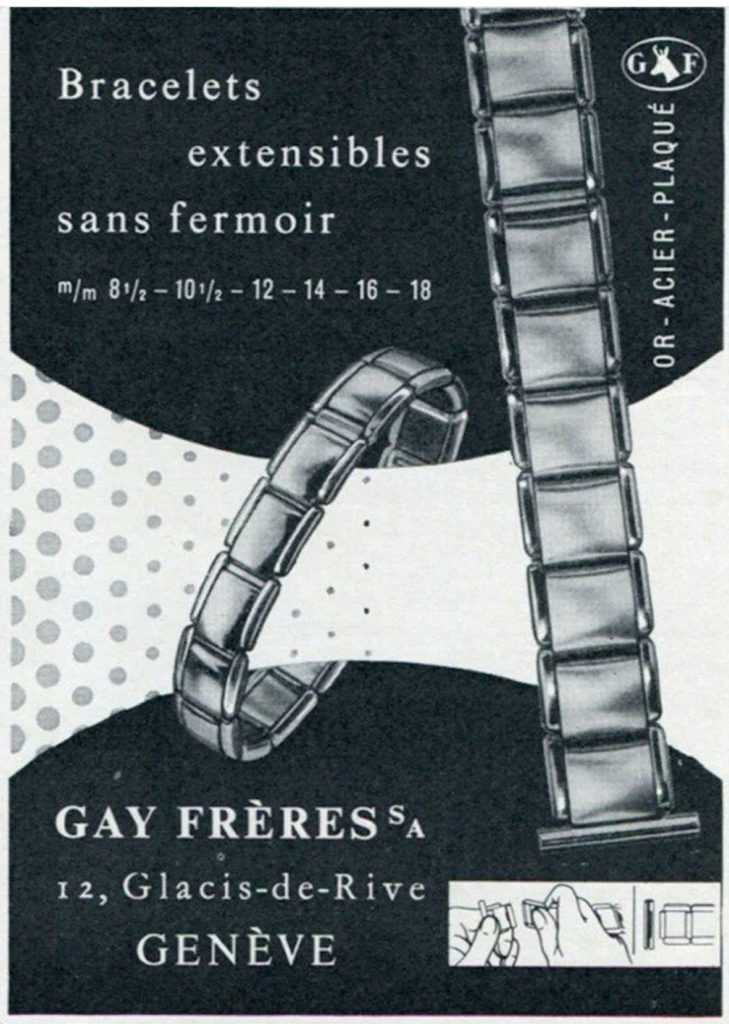
The Gay Frères bracelets were characterized by the logo inside the deployant, with the initials G and F and, between them, a chamois head. They were already famous in the early 1930s for their comfort, strength and extensibility. Furthermore, they were quite simple to produce on a large scale. All features that, together with the excellent quality, caught Rolex’s interest and the company became their first bracelets supplier.
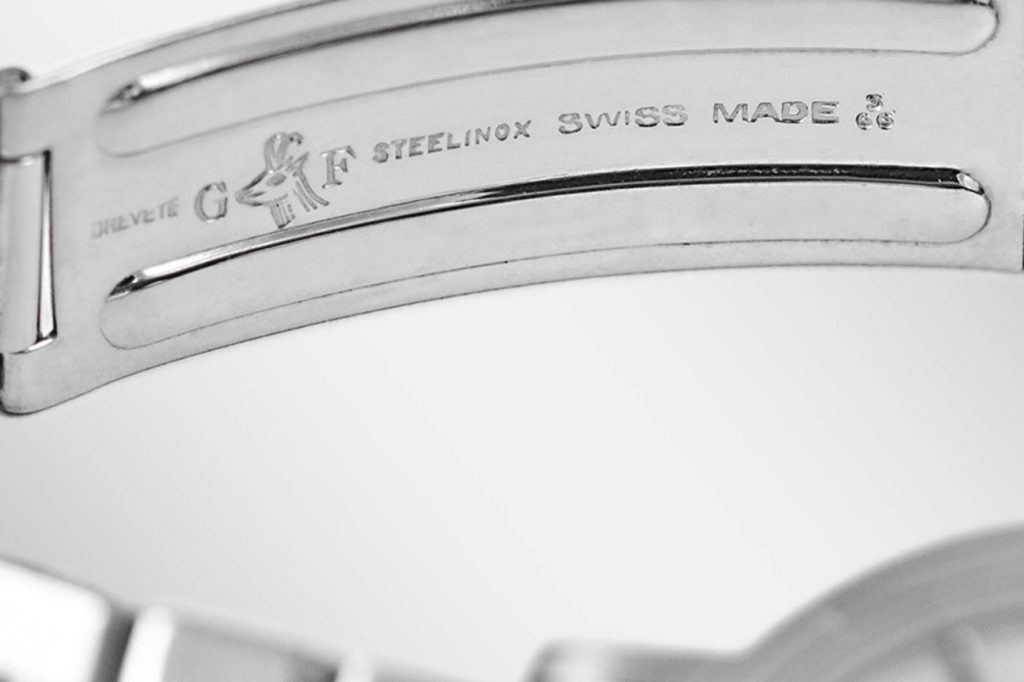
We forgot an important feature of the Gay Frères bracelets: the creativity of their design. Over the last century, the company has created products that were able to always capture the spirit of the time, using steel, gold and platinum to create bracelets of all kinds, shapes and sizes. Those produced during the Art Déco period were particularly appreciated for the artistic and productive expertise the manufacture put into them.
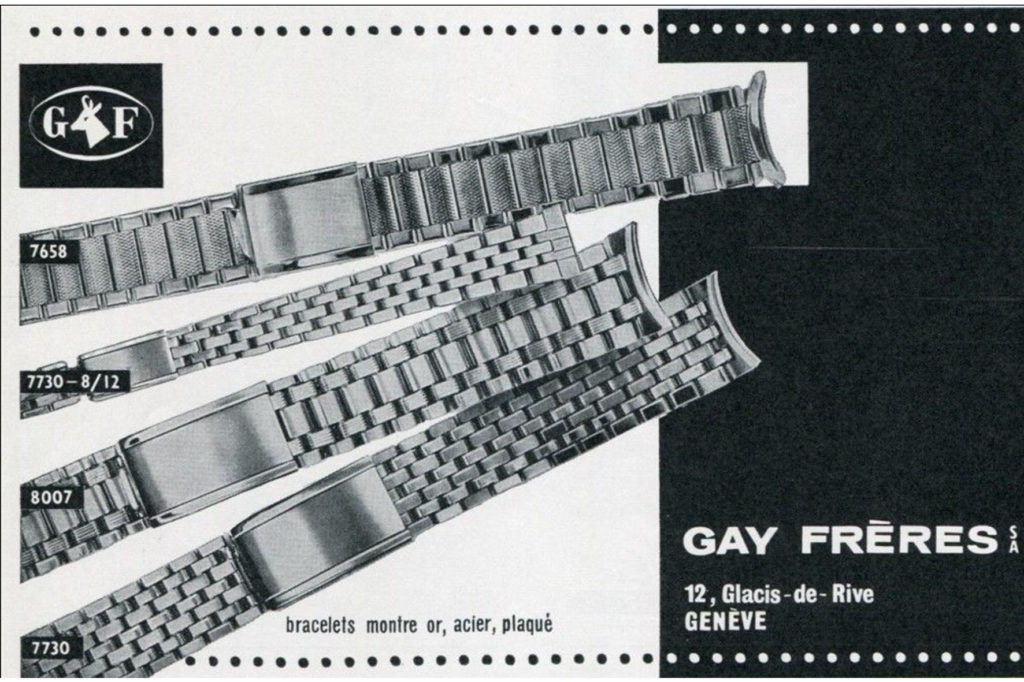
After converting their production from chains to bracelets at the beginning of the last century, the other important turning point to define Gay Frères’ ability and industrial vision was their specialization in steel processing. In the 1930s, steel watch cases began to outnumber those made of precious metals, and consequently the demand for steel bracelets increased. This alloy, more difficult to create and work with than gold, required a lot of craftsmanship – of which Gay Frères was far from lacking: this allowed them to further consolidate their leadership in the Swiss watch industry.
EXCEPTIONAL PARTNERS
Without wronging other brands, it seems that Gay Frères – at least in the 1940s and 1950s – reserved the best creations for their most illustrious neighbors, the Geneva-based manufacturers Patek Philippe and Vacheron Constantin. For both companies, they created bracelets of the highest quality, like that of the watches on which they were mounted.
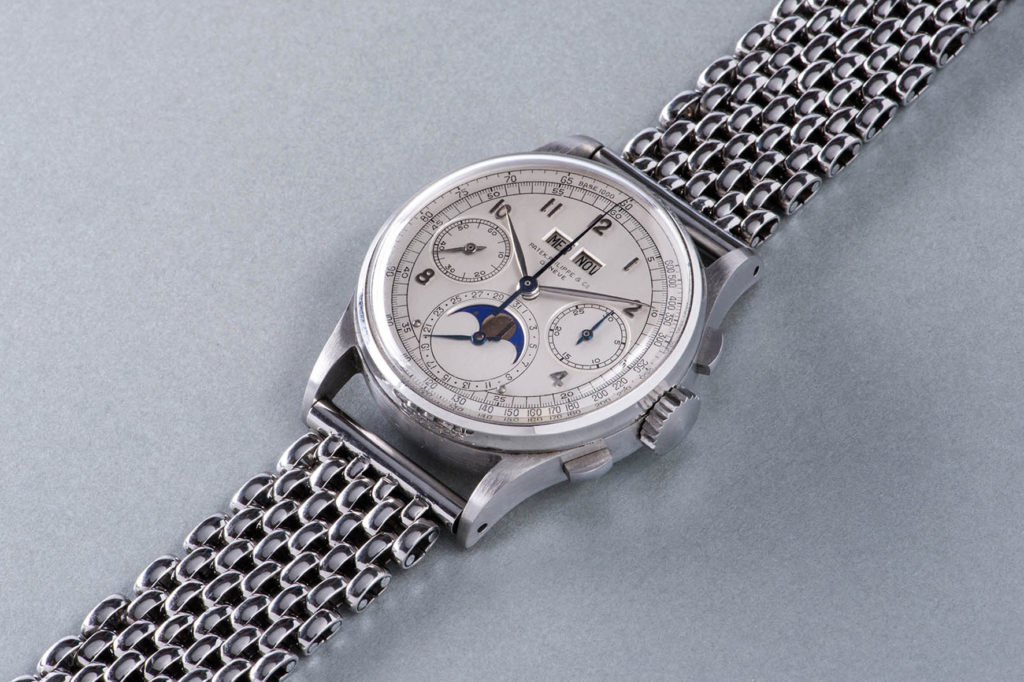
Just think of the classic beads-of-rice bracelets, so versatile that Patek Philippe combined them with both simple steel Calatravas and perpetual calendars in rose gold. Because, despite the mastery of steel processing, Gay Frères continued to produce items made of precious metals as well.
GAY FRÈRES AND THE CHRONOGRAPHS
And thus we come to the third industrial turning point for Gay Frères, this time regarding the development of chronographs in the 60s and 70s. The company was able to understand that bracelets created for elegant watches or for sporty timepieces must have different – maybe subtle but different – aesthetics and functional features. It was not easy to turn this concept into a product, but the acumen of people at the helm of the manufacture managed to make it a winning milestone.
When some watchmakers started to shift their attention towards the creation of chronographs and other professional watches, Gay Frères introduced new designs and produced both beads-of-rice and Oyster-type bracelets for companies such as Heuer. It is not uncommon to find both of these bracelets on different models of the brand, including the first Carreras and Autavias.
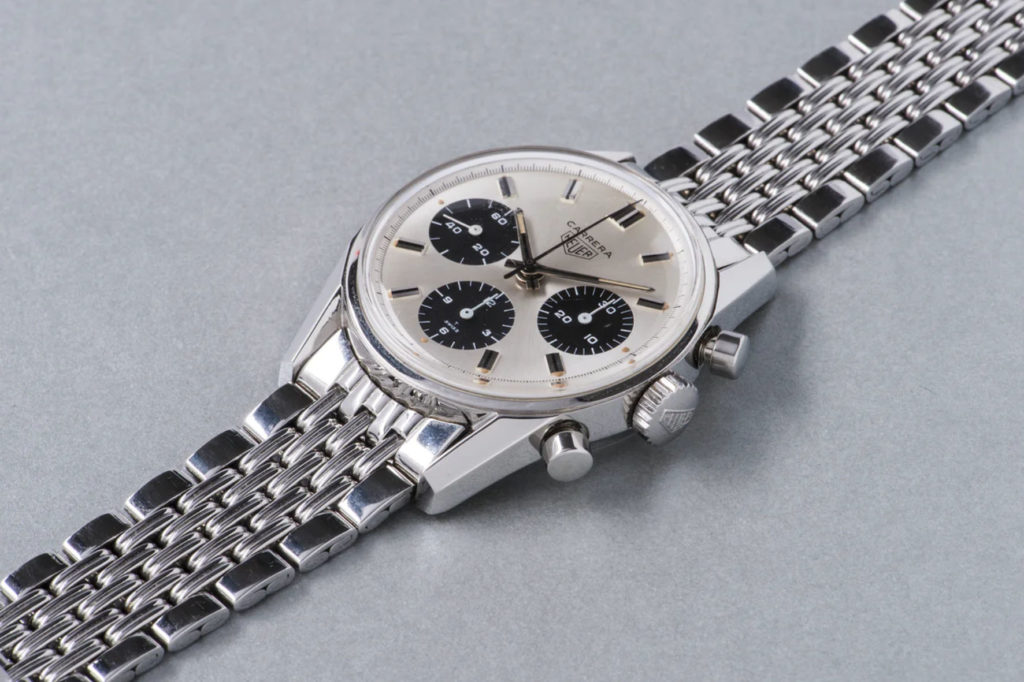
The case of Zenith is even more sensational: for its new chronograph, the El Primero, the company ordered both ladder and hollow-link bracelets. The first ones have become something of Zenith’s hallmark, to the point that not everyone knows it’s a Gay Frères design. These bracelets have given Zenith watches a distinctive look (it is no coincidence that they are re-proposed in the modern Revival editions of the brand), so much so that today the original steel ones can even cost thousands of euros. An amount that some people would be ready to spend to match those bracelets to the case of their El Primero from the 1960s.
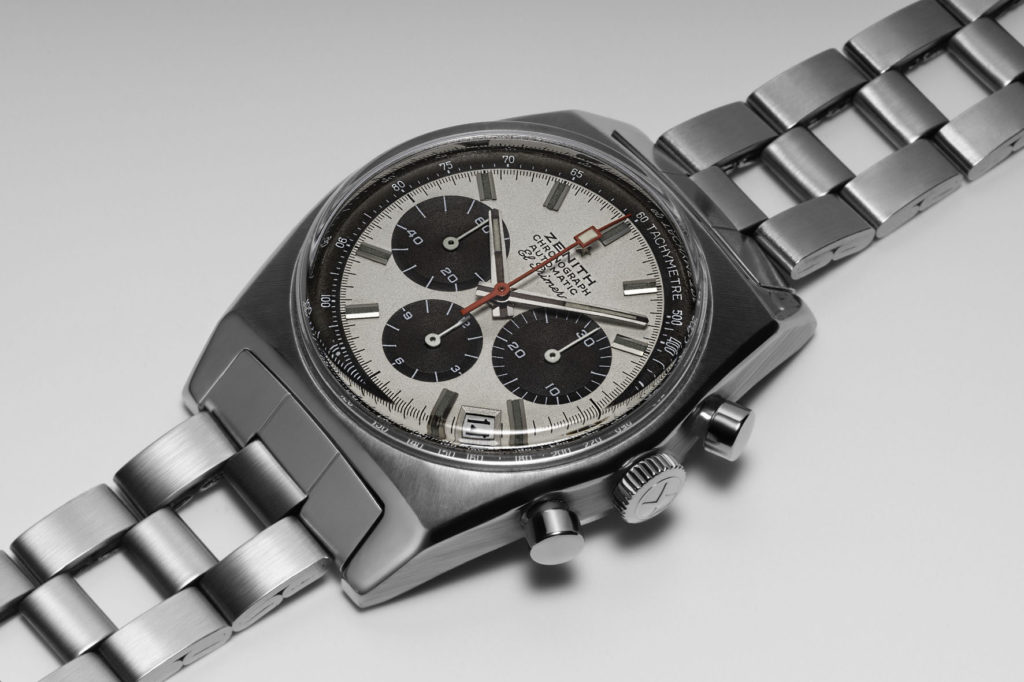
THE INTEGRATED BRACELETS
Then came the 70s, the years of the integrated bracelets, in which the balance between elegant and disruptive design that characterized the Gay Frères bracelets attracted some of the most established brands, both former customers such as Patek Philippe, and others who had never worked with steel. One among all: Audemars Piguet.
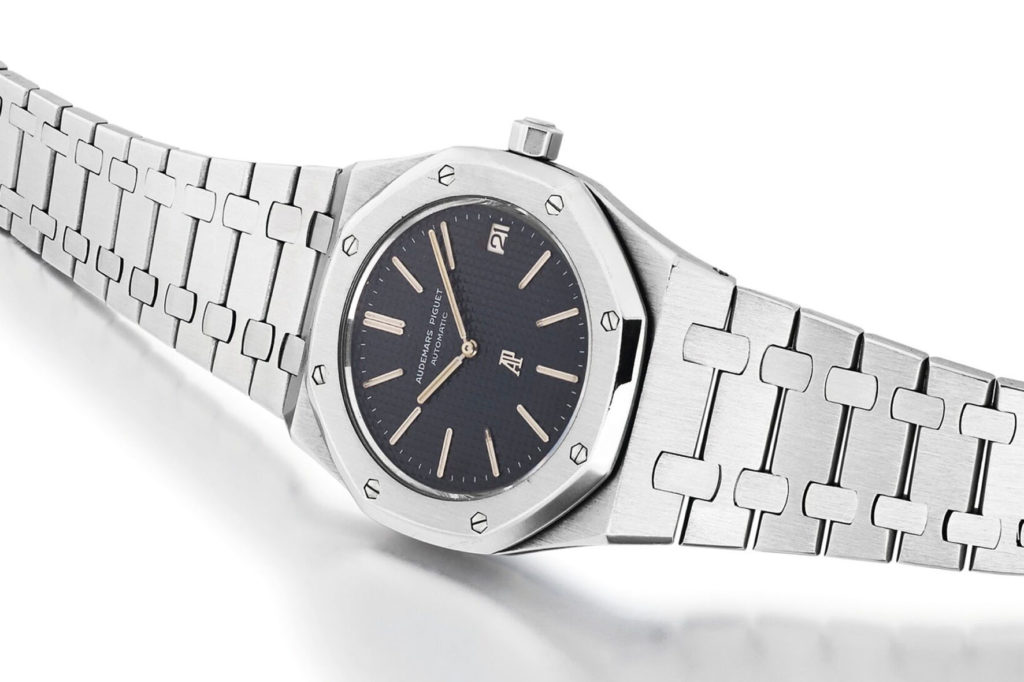
Before the Royal Oak, the manufacture had only created elegant and complicated watches – all made with precious metals – but relied on Gay Frères’ expertise with steel for the design of the first integrated bracelet on their quintessential sport watch. The same happened a few years later, when Patek Philippe launched the Nautilus. Could it be a coincidence that both watches, in addition to the signature of Gerald Genta, had the same bracelet supplier?
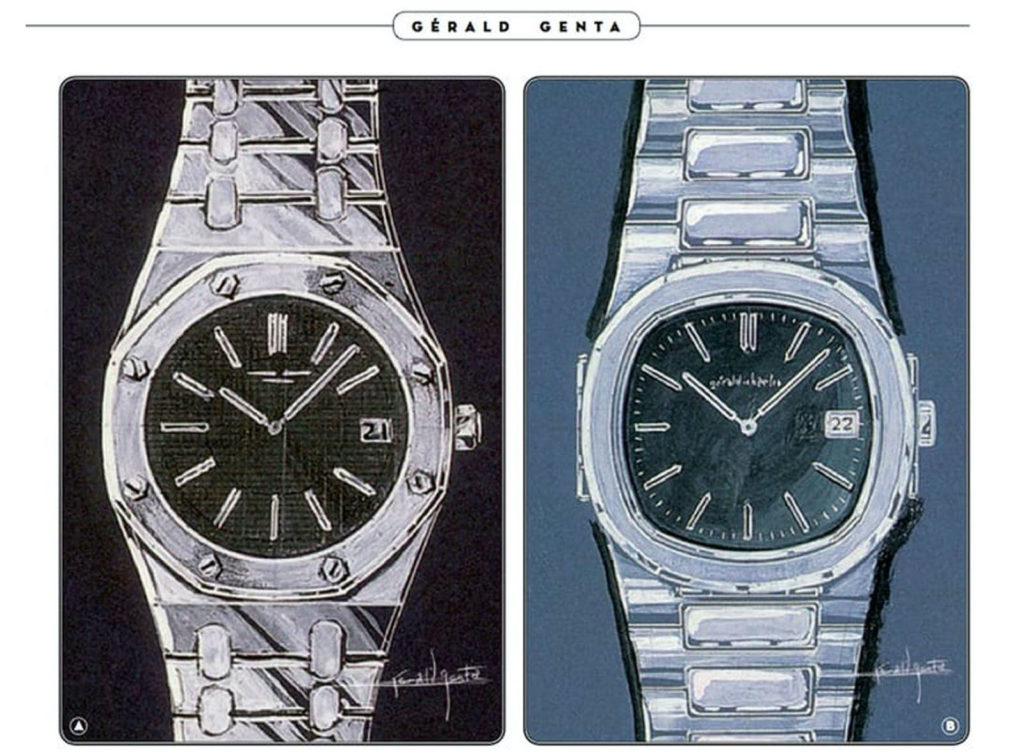
SWISS PRIDE
Of course not, because in 1976 the company was much bigger than both of the aforementioned manufacturers. Still family-owned, run by the brothers Jacques-Hubert and Jean-François Gay, Gay Frères was one of the largest factories in Geneva and employed over 500 people.
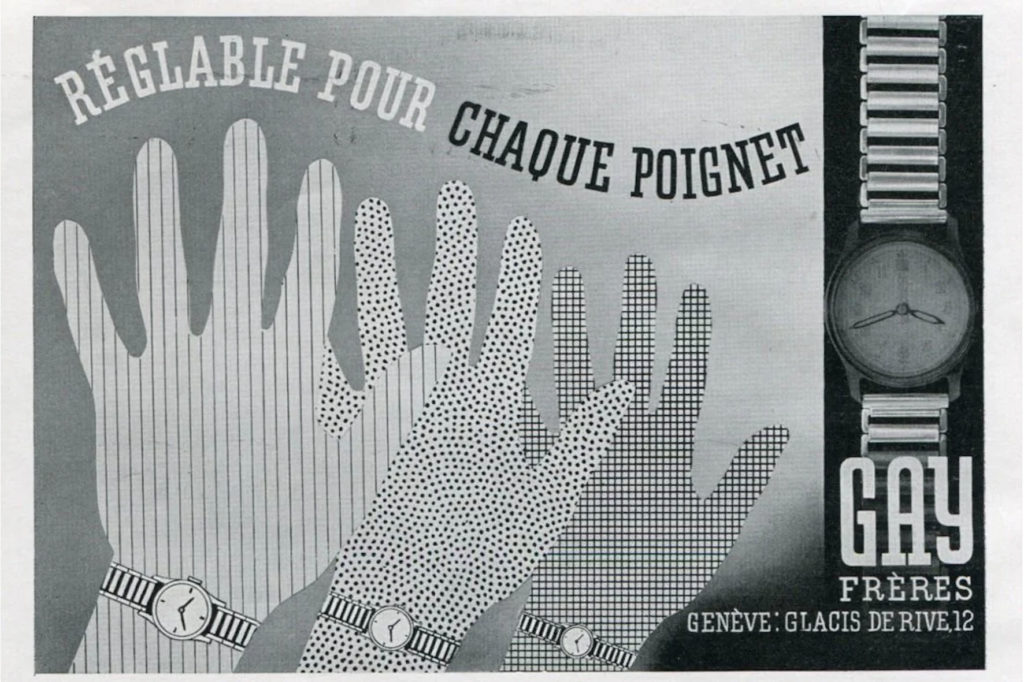
Understandably, a factory with these characteristics of excellence and with such a strong ability to understand the market and anticipate the customer’s wishes could not remain independent in an era of great merging. In fact, in 1998 Gay Frères was acquired by Rolex, to which they had begun to supply Bonklip bracelets in the 1930s and with which they had developed the legendary Oyster bracelet. Along with these, the other bracelets that characterize Gay Frères are the ladder one made for Zenith and the beads-of-rice ones.
Not bad for a company that has never defined itself otherwise than a chainiste and that even today, despite belonging to Rolex, still proudly claims its artisan and independent origins.
By Davide Passoni

